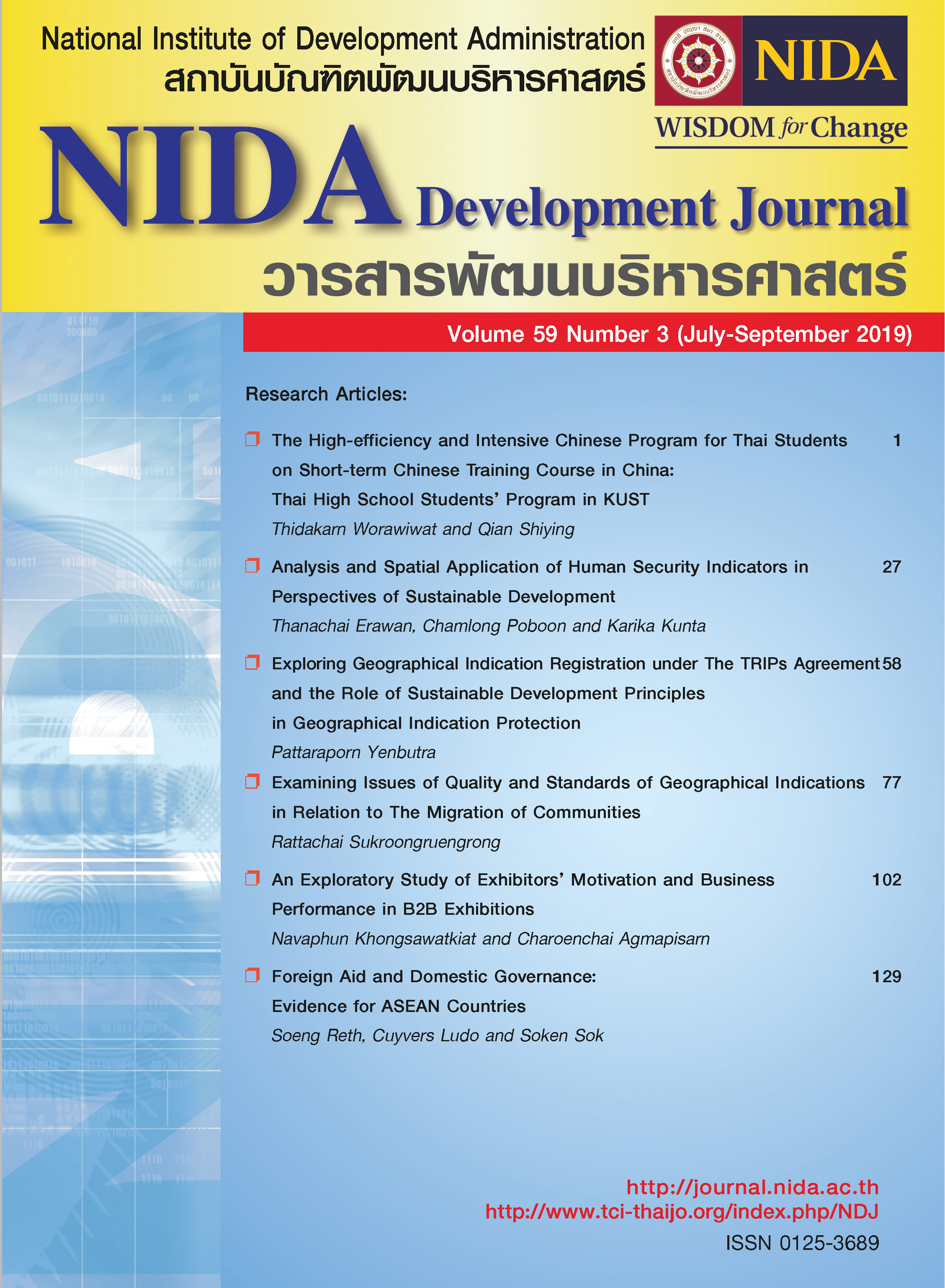The High-efficiency and Intensive Chinese program for Thai students on short-term Chinese training course in China: Thai high school students program in KUST
Keywords:
China, Chinese course, Education, Short-course, Thai studentAbstract
Nowadays, the teaching of Chinese is growing worldwide. Chinese is one of the world’s official languages. Thai people’s interest in studying Chinese is increasing. The Thai government also encourages Thai people to learn Chinese. Therefore, the government has established Chinese language courses at primary schools, secondary schools and higher educational institutions. Chinese language education of Thailand witnesses a good development. Most of Thai schools directly employed local Chinese teachers. However, many Thai schools are still lack of Chinese teachers. Therefore, the Ministry of Education of Thailand also cooperates with the Ministry of Education of China for sending the Hanban’s volunteer teacher to Thailand. From inquiring and collecting information from various schools in Thailand, it was found that although Thai students can learn Chinese with native speakers, but there are many factors that cause the students to spend quite a long time to learn Chinese well. Many parents desire their students to have a chance for learning Chinese in China mainland, because their Chinese will be level up faster. So, the Ministry of Education of Thailand directly cooperates with Kunming University of Science and Technology to open the High Quality Chinese Education Program for Thai High School at KUST, China in 2011. This cooperation is for Thai high school students have the opportunity to learn Chinese in real place, touch the real environment, which has got the high quality and good success. In just half a year, these students’ Chinese skill and knowledge have improved rapidly.
References
Feng Zhongfang, Wu Yinghui (2009). An Investigation Report on the Chinese-Teaching in the Primary and Secondary Schools in Chiang Mai of Thailand. Yunnan Normal University Journal,7(4).
Qiu Rui, Zhang Jia-zheng (2013). A Study on Short-term Training of Native Chinese Language Teachers in Primary and Secondary Schools of Thailand. Journal of Yunnan Normal University: Teaching and Research of Chinese as A Foreign Language,11(2), 83-92.
Ronnaphol Masuntisuk. Chinese Language Teaching in Thailand at the Primary and Secondary Education Levels. Retrieved from http://www.thaiworld.org/upload/question/file_827.pdf.
Sureeporn Traijan (2014). The Problem Conditions for Teaching and Learning Chinese language in Thailand Nowadays of the Vocational Education Students. Pathumthani University Academic Journal, 6(2), 195-199.
Wang Liyan (2017). Foreign Students Primary Culture Courses Teaching Strategy Analysis. Journal of Hebei University of Economics and Business,17(4), 69-72.
Wongsurawat Wasana (2008). Contending for a Claim on Civilization: The Sino-Siamese Struggle to Control Overseas Chinese Education in Siam. Journal of Chinese Overseas, 4 (2), 161–182.
Wu Hongmei, Xu Mengjie, Jenny Chan, & Jiao Lingjia (2017). The Limits and Possibilities of Tutorial Systems in China’s Higher Education. Journal of Ningbo Institute of Education,19(6), 5-9.
Zhang Fan (2011). The Education System in Thailand and the Present Situation of Chinese Teaching. Journal of Hubei Radio& Television University,31(12), 123-124.
Downloads
Published
How to Cite
Issue
Section
License
Copyright (c) 2020 NIDA Development Journal

This work is licensed under a Creative Commons Attribution-NonCommercial-NoDerivatives 4.0 International License.





